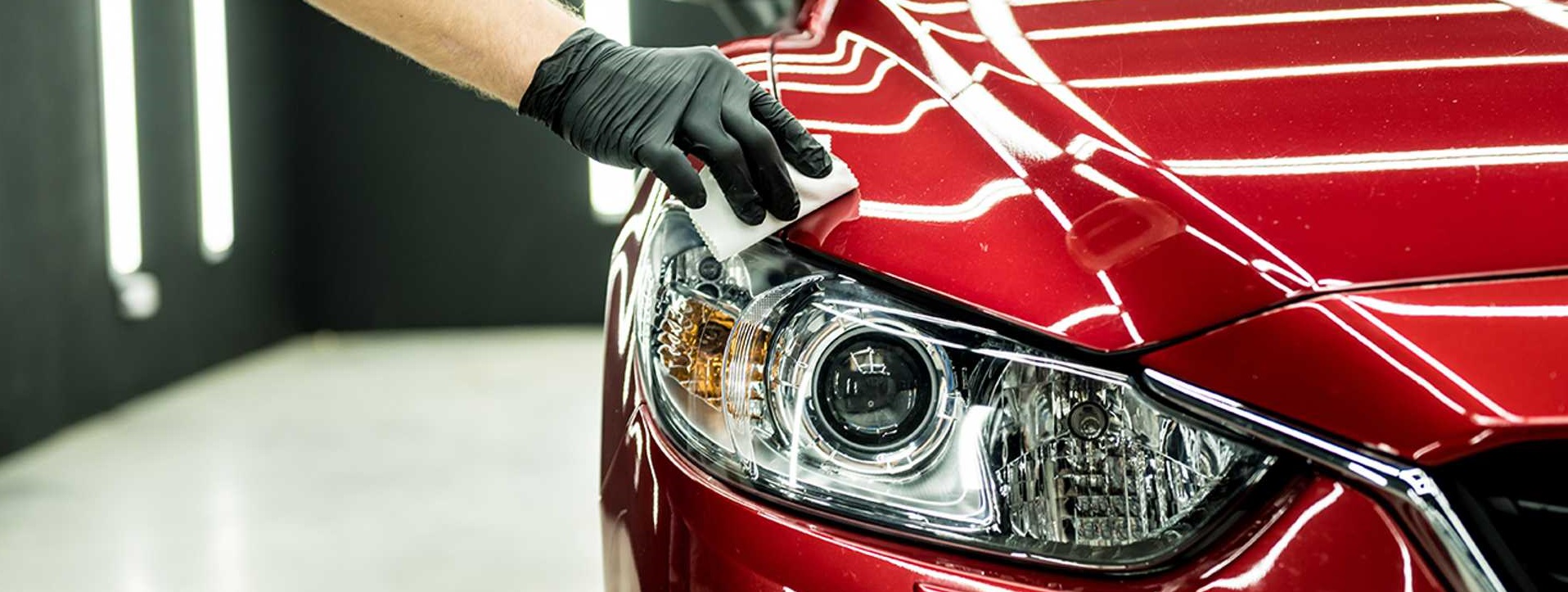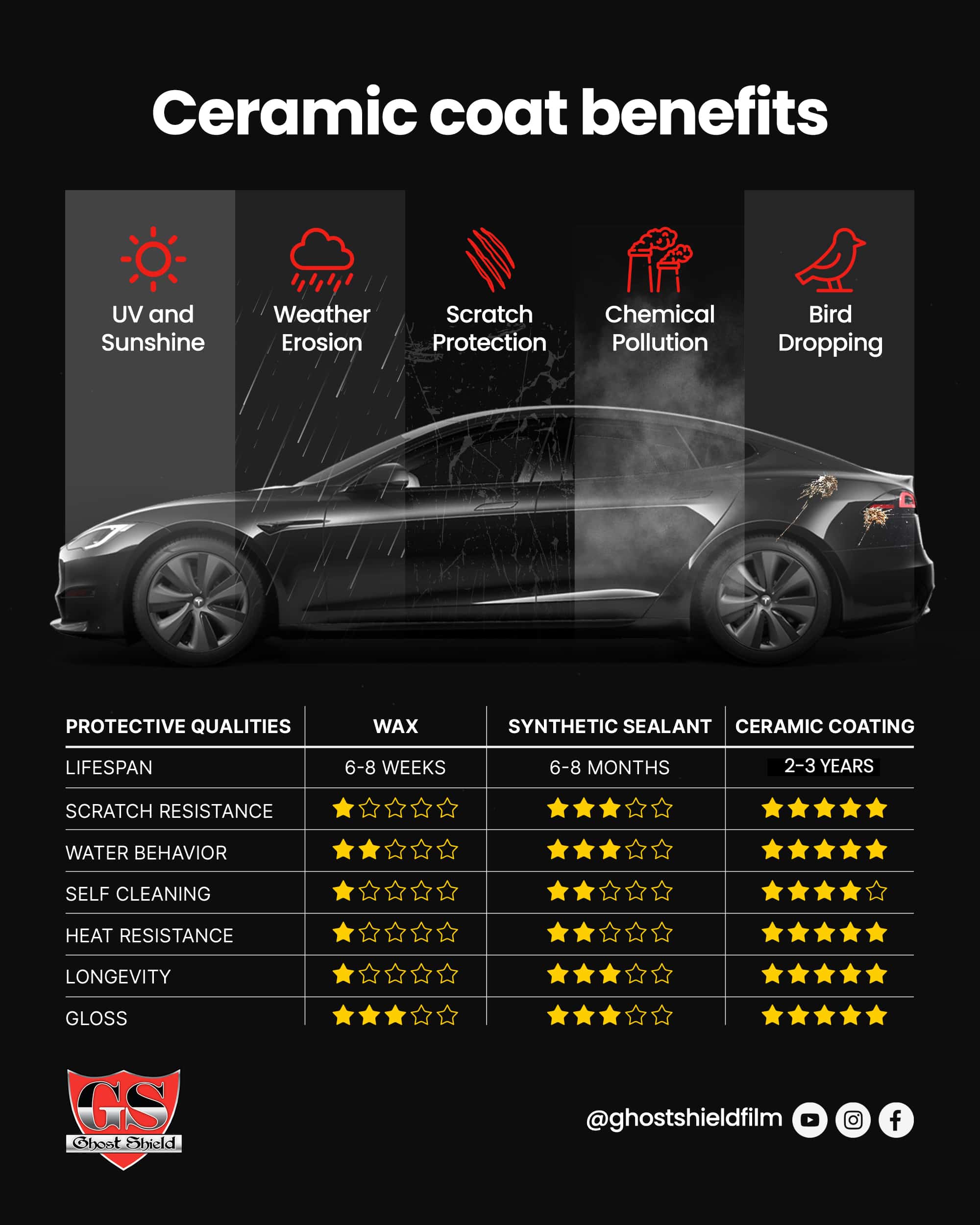Explore the Difference Made by Specialist Application of So Fresh & So Clean Detailers Ceramic Coating
Explore the Difference Made by Specialist Application of So Fresh & So Clean Detailers Ceramic Coating
Blog Article
The Science Behind Ceramic Covering: Why It's Vital for Your Vehicle
Comprehending the science behind ceramic layer exposes its significance for automobile protection and maintenance. As we explore the subtleties of ceramic finish, the ramifications for both the durability and visual top quality of your vehicle come to be progressively clear.
What Is Ceramic Coating?
Ceramic layer is an innovative protective layer put on an automobile's exterior, created to boost its sturdiness and appearance. Making up a fluid polymer that chemically bonds with the factory paint, this innovative technology creates a durable shield against ecological contaminants such as dirt, UV rays, bird droppings, and road salt. Unlike typical wax or sealants, which may call for frequent reapplication, ceramic layers give lasting defense that can endure for several years with appropriate upkeep.

In enhancement to its safety top qualities, ceramic finish can likewise contribute to the vehicle's resale value by avoiding and preserving the paintwork oxidation. Overall, ceramic layer stands for a considerable development in automotive treatment, offering vehicle proprietors with an efficient solution for keeping their investment for years ahead.
How Ceramic Coating Functions
The process behind ceramic layer includes a complex interaction in between the finish's molecular structure and the lorry's paint surface. Ceramic coverings consist largely of silica dioxide (SiO ?) and other chemical substances that produce a sturdy layer of security when used to an automobile's exterior. Upon application, the layer forms a semi-permanent bond with the paint, thanks to its nanoscale fragments that permeate the tiny pores of the surface area.
As the finishing cures, it goes through a chemical response that improves its solidity and hydrophobic residential or commercial properties. This reaction strengthens the covering, successfully developing a protective barrier that is resistant to ecological contaminants such as dirt, UV rays, and chemical etching. The result is a surface area that repels water, causing it to bead up and roll off, therefore lowering the risk of water spots and spots.
Additionally, the level of smoothness of the ceramic layer decreases friction, which assists to stop scrapes and swirl marks. By sticking snugly to the paint, the coating also aids in preserving the automobile's aesthetic charm gradually, inevitably maintaining its worth and look. This complex procedure highlights the innovative modern technology behind ceramic coatings, making them a remarkable selection for automobile security.
Key Advantages of Ceramic Layer
Frequently considered as a game-changer in car upkeep, ceramic coating offers numerous advantages that extend past mere appearances. Among the most substantial advantages is its exceptional security versus ecological contaminants. Unlike conventional wax, ceramic coverings create a solid chemical bond with the vehicle's paint, providing a durable barrier versus UV rays, bird droppings, tree sap, and road salt.
Additionally, ceramic finishes have hydrophobic homes, which suggests they ward off water and other fluids. This function not only aids in maintaining the car cleaner for longer durations however likewise facilitates simpler cleaning, as dust and gunk are much less most likely to follow the surface.
Additionally, ceramic finishes boost the car's gloss and shine, ensuring that it preserves a showroom-like appearance in time - So Fresh & So Clean Detailers Ceramic Coating. The long life of ceramic finishes is another engaging benefit; they can last a number of years with appropriate upkeep, thus lowering the regularity of reapplication compared to traditional waxes
Contrast With Standard Wax
When comparing ceramic finishings to typical wax, it's vital to recognize the considerable distinctions in toughness and protection. Ceramic layers are crafted from innovative nanotechnology, offering a durable layer of protection that can last a number of years. On the other hand, typical wax generally lasts just a few weeks to a few months, needing regular reapplication to keep its efficiency.
The chemical structure of ceramic finishings permits them to bond at a molecular degree with the car's paint, developing a sturdy guard against environmental pollutants such as bird droppings, tree sap, and UV rays - So Fresh & her comment is here So Clean Detailers Ceramic Coating. Traditional wax, while providing a short-term luster, lacks this degree of bonding, making it a lot more prone to degradation from extreme weather and chemicals

Maintenance Tips for Ceramic Layer
Making sure the longevity and performance of a ceramic finish requires consistent maintenance. To make best use of the benefits of your ceramic coating, normal washing is important.
Furthermore, take into consideration utilizing a ceramic maintenance spray or booster every few months. These items boost the hydrophobic residential or commercial properties of the covering and include an extra layer of protection. When drying your lorry, utilize a microfiber towel to stop water places.
Avoid automated automobile cleans with brushes, as they can compromise the integrity of the covering. Rather, choose touchless cleans browse this site or hand cleaning approaches. Eliminate them promptly to avoid damage. if your lorry encounters difficult contaminants like tree sap or bird droppings.
Last but not least, periodic examinations are essential. Search for any type of indicators of wear or damage to the finishing, and consult an expert detailer if fixings or reapplication is necessary. By adhering to these maintenance suggestions, you can guarantee your ceramic finishing remains effective and your vehicle maintains its immaculate appearance.
Verdict
In final thought, ceramic finishing stands for a significant improvement in car protection technology, using a lasting and resilient obstacle versus environmental contaminants. The remarkable benefits of ceramic finishing make it a crucial investment for vehicle proprietors seeking to protect their lorry's appearance and honesty over time.
Comprehending the science behind ceramic finishing exposes its importance for automobile protection and maintenance (So Fresh & So Clean Detailers Ceramic Coating).The process behind ceramic finish involves an intricate communication in between the finish's molecular framework and the automobile's paint surface. Unlike standard wax, ceramic coatings create a solid chemical bond with the automobile's paint, offering a durable obstacle versus UV rays, bird droppings, tree sap, and road salt
Ultimately, while traditional wax might be much more budget-friendly initially, the lasting advantages of ceramic coatings make them a premium option for car defense.

Report this page